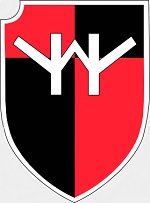Corgi AA38511 German Messerschmitt Bf 110E-2 (Trop) Destroyer - Zerstorergeschwader 26 "Horst Wessel", Derna Airfield, Libya, 1941 (1:72 Scale)
"Guns before butter. Guns will make us powerful; butter will only make us fat."
- Reichsmarschall Hermann Goering, Head of the German Luftwaffe
 The Messerschmitt Bf 110 was an aircraft of very mixed fortunes. It has often been criticized for its failure during the Battle of Britain, while its successes in other fields have been largely ignored. Despite not living up to the Luftwaffe's expectations it did manage to serve Germany throughout the Second World War in the long-range escort fighter, fighter-bomber, reconnaissance, ground attack and night fighter roles.
The Messerschmitt Bf 110 was an aircraft of very mixed fortunes. It has often been criticized for its failure during the Battle of Britain, while its successes in other fields have been largely ignored. Despite not living up to the Luftwaffe's expectations it did manage to serve Germany throughout the Second World War in the long-range escort fighter, fighter-bomber, reconnaissance, ground attack and night fighter roles.
The long-range multi-seat escort fighter is possibly the most difficult of combat aircraft to design. Certainly no entirely successful machine in this category emerged from the Second World War, and when Professor Willy Messerschmitt began design studies for such a warplane towards the end of 1934 at the Bayerische Flugzeugwerke at Augsburg his problems would have seemed insurmountable had he possessed a full knowledge of interceptor fighter development trends abroad. Such a machine as was required by Marshal Goering to equip the elite "zerstorer" formations that he envisaged had to be capable of penetrating deep into enemy territory, possessing sufficient range to accompany bomber formations. The fuel tankage necessary presented a serious weight penalty and called for the use of two engines if the "zerstorer" was to achieve a performance approaching that of the lighter interceptor fighter by which it would be opposed. Yet it had to be maneuverable if it was to successfully fend off the enemy's single-seaters.
The Bf 110Es were capable of carrying a respectable bomb load of 4,410 lb (2,000 kg) as fighter-bombers, while straight fighter and reconnaissance versions were also built. These, and later versions, were operated with a fair degree of success in many war zones. The Bf 110F was basically similar to the E, but two new variants were produced - the 110F-2 carrying rocket projectiles and the F-4 with two 30 mm cannon and an extra crew member for night fighting. The last version, the Bf 110G, was intended for use originally as a fighter-bomber but, in view of the success of the F-4 and the increasingly heavy attacks on Germany by Allied bombers, was employed mostly as a night fighter.
Pictured here is a 1:72 scale replica of a German Messerschmitt Bf 110E-2 Destroyer that was attached to Zerstorergeschwader 26 "Horst Wessel", then deployed to Derna Airfield, Libya, during 1941.
Sold Out!
Dimensions:
Wingspan: 10-inches
Length: 8-inches
Release Date: September 2022
 Historical Account: "Horst Wessel" - With combat operations against the Royal Air Force during the Battle of Britain proving to be close to catastrophic for Luftwaffe Messerschmitt Bf 110 heavy fighter units, you could be forgiven for thinking that the months which followed the fighting over the UK to be a time spent licking wounds and making good losses. In actual fact, even though the Luftwaffe were at the advanced stages of testing a replacement twin engined design, combat operations from 1941 onwards would actually prove to be much better suited to the fighting strengths of Goering's Destroyer force.
Historical Account: "Horst Wessel" - With combat operations against the Royal Air Force during the Battle of Britain proving to be close to catastrophic for Luftwaffe Messerschmitt Bf 110 heavy fighter units, you could be forgiven for thinking that the months which followed the fighting over the UK to be a time spent licking wounds and making good losses. In actual fact, even though the Luftwaffe were at the advanced stages of testing a replacement twin engined design, combat operations from 1941 onwards would actually prove to be much better suited to the fighting strengths of Goering's Destroyer force.
With the ability to fly long patrols and possessing impressive firepower, the Bf 110 proved to be an excellent long range fighter, maritime patrol and light strike attack platform, ensuring the type would remain in service for the majority of WWII. When the Luftwaffe were forced to send aircraft to support faltering Italian Army operations in North Africa, the Messerschmitt Bf 110s of Zerstorergeschwader 26 were amongst the first to be sent to this theatre, tasked initially with providing fighter protection for Stuka units engaged in halting Allied ground advances. The aircraft's desert deployment would also prove significant for another operational reason, its first use in a role at which it would prove to be incredibly successful, that of nightfighter. On the night of May 22nd/23rd, 1941, the Messerschmitt Bf 110 fighter was first pressed into the night interception role over the desert.


